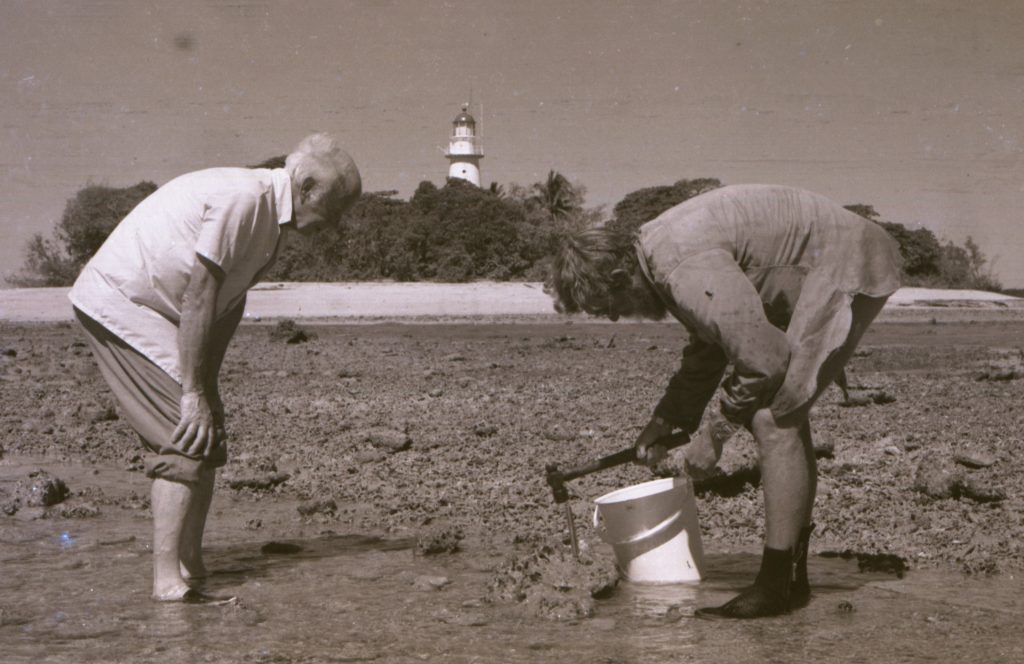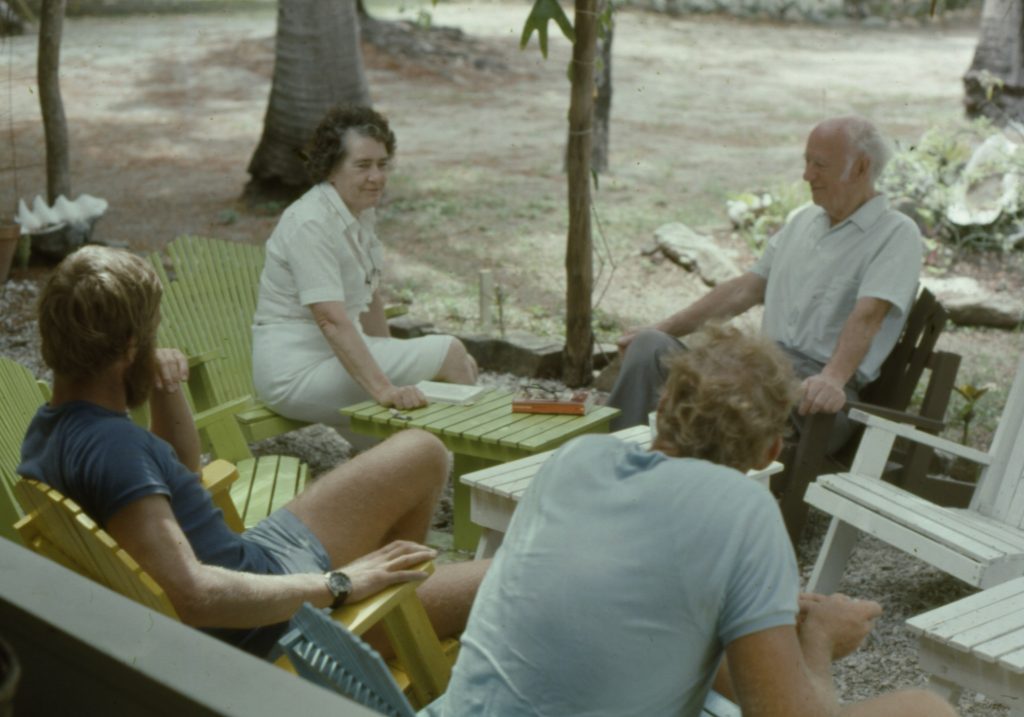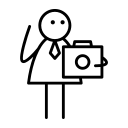9 Sir Maurice Yonge’s Private Library
Trisha Fielding
The success of the 1928 Great Barrier Reef Expedition firmly established Maurice Yonge’s international reputation as a zoologist, and in 1932 he was appointed the first Professor of Zoology at the University of Bristol. His professional achievements over the course of his long career earned him many accolades, including election as a Fellow of the Royal Society in 1946, the award of a CBE in 1954, the conferment of a knighthood in 1967, and of honorary degrees from four universities.[1] But his personal life was touched by tragedy when his wife Mattie died in 1945. Yonge dedicated his 1949 book The Sea Shore to Mattie, evocatively writing: “In Memory – M.J.Y. – Who will walk on no more shores with me”.
Throughout his life, Sir Maurice Yonge built up an extensive private library of books, reports and papers relating to all aspects of the sea. When aged in his early 80s (and knowing that his health was failing him), he offered to sell his private scientific library to the Australian Institute of Marine Science (AIMS). A fisheries research institute in Japan had expressed a keen interest in acquiring the library, but in view of his past associations with Australia, Sir Maurice felt the most appropriate home for his library was at AIMS.
Yonge’s Return to the Reef
Much of his fondness for AIMS stemmed from a six-week research trip to the Institute that Sir Maurice undertook in 1978. He formed lasting bonds with researchers there and considered his time at AIMS to be the pinnacle of his career in marine biology.[2]
After his retirement from the University of Edinburgh, Sir Maurice returned to full time marine biology research, with a particular focus on further developing his work on Tridacnidae, which he had begun 50 years earlier. He approached AIMS to canvas support for this work, with a view to visiting AIMS and conducting fieldwork at several sites. In correspondence to AIMS, he noted that:
I still have a lot of matters I want to clear up covering all species and, especially with Hippopus, all sizes. Most of all I would love to follow up the post-larval development.[3]

Sir Maurice Yonge arrived in North Queensland in early 1978, this time accompanied by his second wife, Lady Phyllis Yonge. With the assistance of AIMS personnel including Martin Jones and Ivan Hauri, the Yonges conducted research at various locations in the Palm Islands Group, north of Townsville, including the reef flat between Brisk and Falcon Islands. During this work, the Yonges were accommodated at Orpheus Island Resort. The trip also included a visit to Low Isles. In a later report to AIMS, he noted his disappointment in the state of the reef at Low Isles:
I had the opportunity of revisiting Low Isles, off Port Douglas and the scene of the expedition I led 50 years ago and which worked there for 13 months. It was sad to find the reef surface, then the site of the richest possible array of living organisms and a natural experimental aquarium, now almost entirely dead. This appears to be the effect of sediment brought down by the Daintree River following the clearance of rain forest.[4]
Sir Maurice concluded his report on a high note though, singing the praises of the Institute and its staff and thanking them sincerely for their hospitality, writing:
It is impossible to conclude this brief report without acknowledging the extent of the hospitality and services that my wife and I have received at AIMS. Beginning in 1921, I have worked in marine laboratories all over the world and have never enjoyed comparable facilities. I wish to record our gratitude to the Director and to many others, in particular Martin Jones and Ivan Hauri, who have assisted in so many ways. I leave AIMS with my best wishes for what I am certain will be a highly successful future.[5]

Negotiations for the sale of Yonge’s scientific library to AIMS were finalised in late 1982, and shortly afterwards, Sir Maurice wrote to AIMS Director, John Bunt, to tell him that he was pleased that the matter of his private library had been finalised, noting: “It is probably the best marine biological library in private hands in this country and I am happy that it goes to AIMS.”[6]
JCU Library’s Sir Charles Maurice Yonge Collection
Comprising just over 1,600 items, the Sir Charles Maurice Yonge Collection consists of works published from the early 1700s to the twentieth century, many are now rare. The collection focuses on knowledge of the marine world, with malacology strongly represented, as that was Sir Maurice’s particular expertise. Major subjects covered, include:
- History of biological oceanography, including reports of major marine expeditions of discovery
- Mollusca: taxonomic, ecological and physiological accounts
- Early taxonomic monographs (comprising many of the world’s oldest books on marine life)
- Corals and coral reefs
- Fish and fisheries
- Marine mammals
- Crustacea
- Physical oceanography
- Australian marine explorations
Sir Maurice Yonge’s library was housed at AIMS for over thirty years. In 2016, to ensure safe, long-term preservation of the collection, it was moved to James Cook University Library and is now housed under archival conditions in Special Collections.
- Brian Morton, “Charles Maurice Yonge (1899-1986),” Archives of Natural History 25, no. 3 (1998): 432. https://www.euppublishing.com/doi/abs/10.3366/anh.1998.25.3.431. ↵
- Charles Maurice Yonge, “Letter from C.M. Yonge to Australian Institute of Marine Science, dated 2 March 1978,” Australian Institute of Marine Science Corporate Correspondence File. ↵
- Charles Maurice Yonge, Australian Institute of Marine Science, Australian Institute of Marine Science Corporate Correspondence File. ↵
- Charles Maurice Yonge, “Report by C. M. Yonge,” Papers of Sir Maurice Yonge, National Library of Australia, http://nla.gov.au/nla.obj-2375159028. ↵
- Yonge, “Report.”. ↵
- Charles Maurice Yonge, "Letter from C.M. Yonge to J.S. Bunt, dated 19 October 1982," Australian Institute of Marine Science Corporate Correspondence File. ↵
Large saltwater clams
A branch of zoology dealing with molluscs


